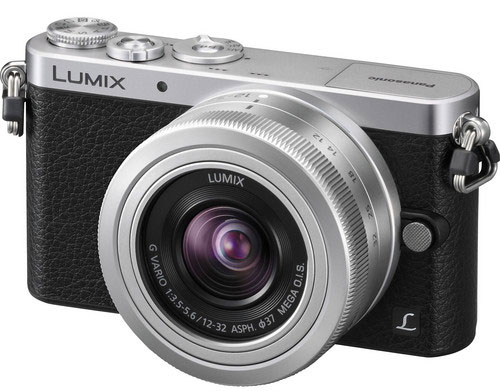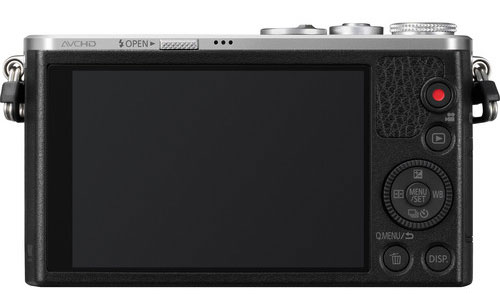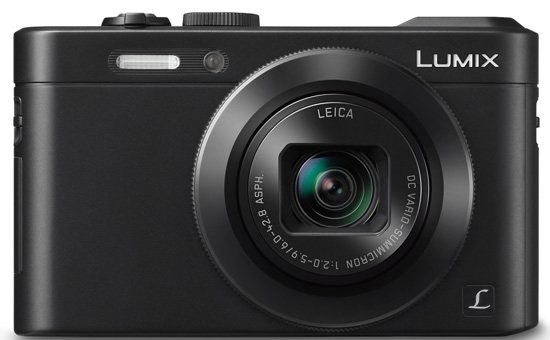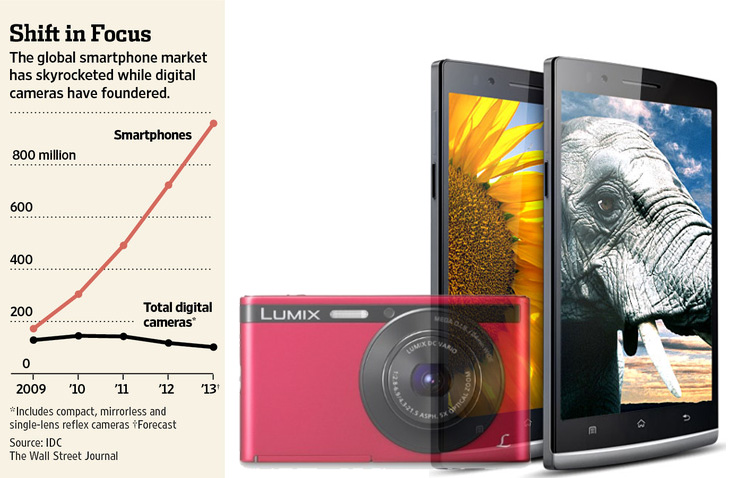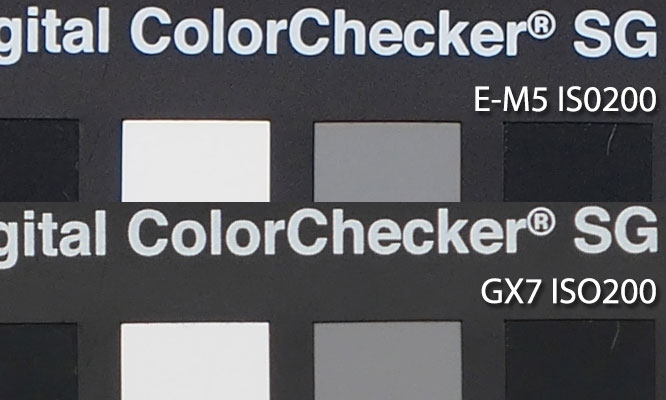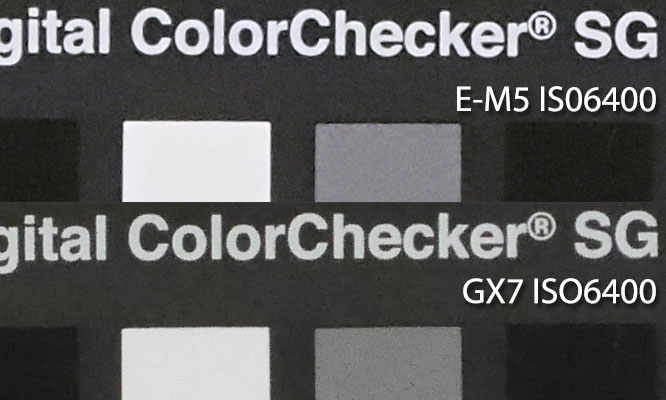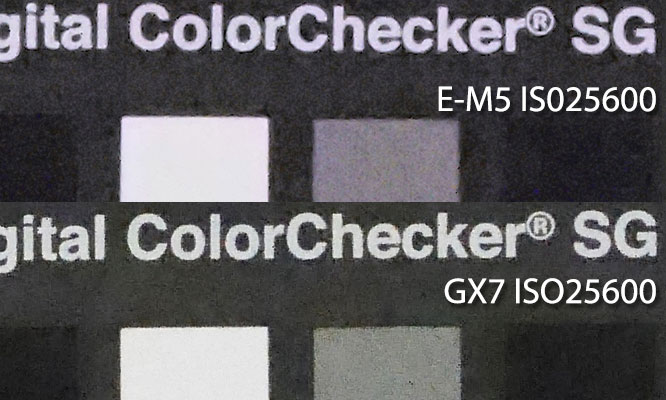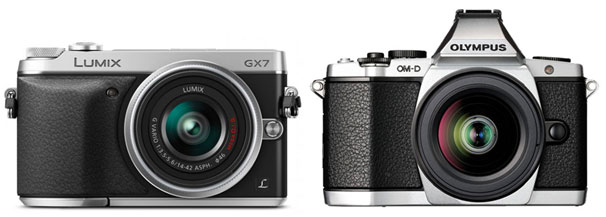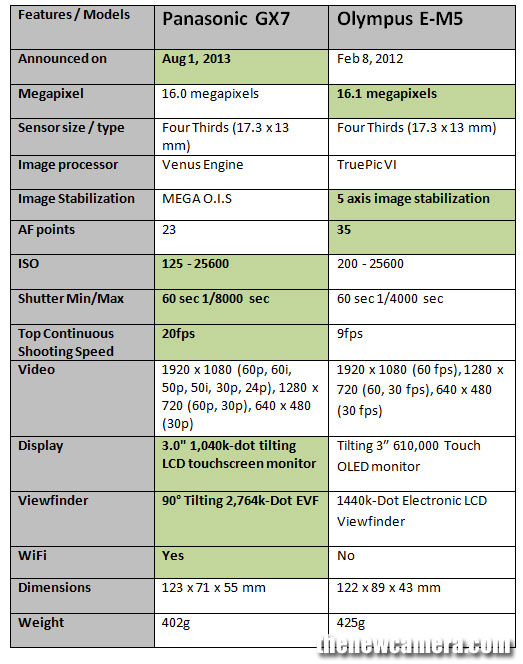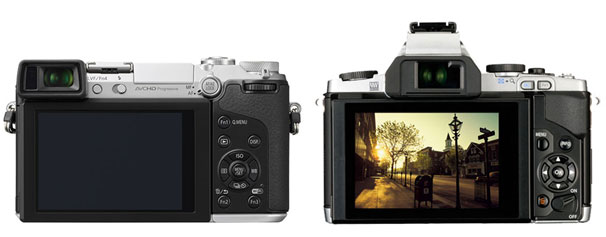 Panasonic DMC-G5KK 16 MP Compact System Camera with 14-42mm Zoom Lens and 3-Inch LCD (Black) available at $299 only at Amazon, its approx $100 less than current price (see at B&H)
Panasonic DMC-G5KK 16 MP Compact System Camera with 14-42mm Zoom Lens and 3-Inch LCD (Black) available at $299 only at Amazon, its approx $100 less than current price (see at B&H)
|
||||||||||||||||||||||||||||||||||||||||||||||||||||||||||||||||||||||||||||||||||||||||||||||||||||||||||||||||||||||||||||||||||||||||||||||||||||||||||||||||||||||||||||||||||||||||||||||||||||||||||||||||||||||||||||||||||||||||||||||||||||||||||||||||||||||||||||||||||||||||||||||||||||||||||||||||||||||||||||||||||||||||||||||||||||||||||||||||||||||||||||||||||||||||||||||||||||||||||||||||||||||||||||||||||||||||||||||||||||||||||||||||||||||||||||||||||||||||||||||||||||||||||||||||||||||||||||||||||||||||||||||||||||||||||||||||||||
|
#1 See Full Size Sample at photographyblog #2 See Full Size Samples at ephotozine
Panasonic GM1 Major Specification
Panasonic GM1 Price: $749.00 | Buy from Amazon Panasonic GM1 Press Release: The Ultimate DSLM (Digital Single Lens Mirrorless) Camera in Ultra Compact Size Panasonic is proud to announce a new premium compact line GM series to its LUMIX Digital Single Lens Mirrorless (DSLM) cameras with the DMC-GM1 with large Digital Live MOS Sensor based on the Micro Four Thirds system standard. The new GM series boasts not just its outstandingly compact profile but its high functional performance for ultimate picture quality. The DMC-GM1 realizes high-quality image recording with real-to-life details through excellent resolution, image rendering and color reproduction. Taking full advantage of 16.00-megapixel Digital Live MOS Sensor and Venus Engine, images are rendered with highly sharp resolution even shot in low-lit situations and at max. 25600 high ISO sensitivity can be selected. The Contrast AF System of DMC-GM1 excels in both speed and accuracy by exchanging digital signal between the camera and the lens at max. 240 fps. A variety of extensive AF functions including Low Light AF, Pinpoint AF and One-shot AF enhances usability to comply with wide-ranging shooting situations. The touch-control system integrated in the 3.0-inch large approx.1036K-dot high resolution monitor immediately lets users to set focus to the subject by just touching it on the screen and you can even release the shutter. It is free and easy to enlarge the target point with fingertips to set precise focus. The DMC-GM1 also features full HD 1920 x 1080, 60i (60 Hz) / 50i (50 Hz) high quality video recording in AVCHD and MP4* with stereo sound. The practical full-time AF and tracking AF is available in video recording, too. The cinema-like 24p video with the bit rate of max. 24 Mbps or P/A/S/M mode provide richly expressive afterimage with overwhelming image quality. The DMC-GM1 incorporates popular Creative Control mode with a total of 22 fascinating filter effects in addition to Time Lapse Shot, Stop Motion Animation or Clear Retouch. The Stop Motion Animation allows producing unique stop motion video and the Clear Retouch function enables to erase unwanted part of a picture after shooting – both operations completes with ease in camera. With the Wi-Fi® connectivity, users can connect the camera to their smartphone / tablet to expand shooting flexibility. It is also possible to use a smartphone / tablet as a multi-capable remote shutter with a monitor. With the Instant Transfer function, photos are automatically sent to the smartphone / tablet right after shooting. On the other hand, both photo and video can be archived to the registered digital equipment such as PC automatically via the wireless access point (router) at home. There are a lot of ingenious inventions that let DMC-GM1 accomplish this marvelous downsizing. The unit mechanism of shutter is redesigned to newly integrate a motor instead of spring, which allows removal of charging structure inside the unit and resulting in approx. 80%** reduction in its unit’s size. The conventional digital single lens mirrorless camera has a structure that settles a frame to support the sensor unit over the main unit frame. However, by adopting the magnesium alloy for the main unit, the DMC-GM1 allows direct attachment of the sensor unit to reduce parts. Despite its ultra compact profile, the DMC-GM1 is equipped with built-in flash (GN5.6 ISO200・m / GN4.0 ISO100・m) which is enough useful for daily snapshots. This is made possible by an adoption of newly developed sliding pantograph-type flash that vertically pops up and down. By optimizing the layout of electronic components with high density mounting, the circuit board is able to have a cutout saving approx. 30%** in space for the sensor unit to fit into. This also helps achieve total volume reduction of internal content. The DMC-GM1 comes equipped with decently designed parts including three-strand aluminum dial or high quality artificial leather grip. Especially the combination with the newly released digital interchangeable lens LUMIX G VARIO 12-32mm / F3.5-5.6 ASPH. / MEGA O.I.S. (H-FS12032) makes perfect match which even satisfies trend-sensitive users to carry around stylishly. On the other hand, the DMC-GM1 allows attachment of Hand Grip DMW-HGR1 (black / silver, sold separately***) to enhance strength of gripping. Packing high photographic performance in sleek, ultra-compact body, the DMC-GM1 is offered in stylish black, traditional silver, noble white and classical orange. There are moments in life deserves to be captured – the DMC-GM1 turns every user across genders, across generations into a life artist. * 30 fps (NTSC) / 25 fps (PAL) in MP4 recording. 1. Ultimate Picture Quality Goes Beyond Expectation The DMC-GM1 incorporates 16.00-megapixel, large Digital Live MOS Sensor complying with Micro Four Thirds system standard that achieves both higher resolution and higher sensitivity image recording with less noise. The photodiode in each pixel is enlarged thanks to the adoption of cutting-edge Semiconductor Fine Technology to improve color saturation by approx. 10% and the redesigned on-chip lens enhances light condensation to achieve approx. 10%* higher sensitivity. Not only these, noise generation is minimized in both pixel circuit and digital signal readout circuit to provide better S/N ratio by approx. 25%*. The image processor Venus Engine features its advanced noise reduction systems. By extending the control level of noise, controllable area of noise is expanded by approx. 64x* in size. This makes it possible to remove large block of noise which was formally hard to detect and helps produce clear, smooth image especially for the nighttime scenery. In addition, the Multi-process NR (Noise Reduction) works in two separate steps allowing even finer control over noise level. The texture of noise itself, regardless of the noise size, is improved with this deliberate control, which is resulting in the reproduction of smooth human skin even in high sensitivity recording. Furthermore, the optimum design of newly adopted Detail Reproduction Filter Process enhances the limit resolution by max. 3%* and the contrast of middle to high range by max. 5%*. Plus, the advanced Intelligent D-range Control offers wider dynamic range while maintaining the smooth gradation thanks to the high-precision signal processing. Suppressing both blocked shadows and blown highlights, every part of an image – from dark to bright – is faithfully reproduced. The combination of the Digital Live MOS Sensor and the Venus Engine achieves approx. 10%* finer detail reproduction, making it possible to capture clear image even in low lit situations and allows max. ISO25600. The DMC-GM1 complies with image recording in RAW. The bundled software SILKYPIX Developer Studio 4.1 SE allows dramatically higher quality image development from RAW to JPEG. Even the images shot at high ISO setting can be produced sharply with minimum noise. This software also enables high quality JPEG processing, that lets users to adjust images in 16 bit data and re-develop it into JPEG with minimum deterioration of image quality. * Panasonic comparison with DMC-GX1. 2. The Top Level of AF Performance among Conventional DSLRs and Mirrorless Cameras All cameras of LUMIX G, and DMC-GM1 adopt Contrast AF for its focus system. Compared with the Phase difference system AF, the Contrast AF boasts higher accuracy especially in shooting with bright lens with small F value. The DMC-GM1 features high-speed Light Speed AF, making it possible to capture even the fast-moving subject clearly. Not only the accuracy but also the speed of AF in DMC-GM1 surpasses the high-end DSLRs with Phase difference. The camera and the lens exchange the digital signal at max. 240 fps to minimize the time to focus. The DMC-GM1 realizes the high speed burst shooting at 5 fps in 16.00-megapixel and max. 40 fps using an electronic shutter. Also, AF Tracking enables consecutive shooting to capture moving subject in sharp focus at 4.0 fps*. The Low Light AF, which is popular in LUMIX G DSLM cameras, is incorporated making it possible to set focus on the subject more precisely in such as moonlight even without AF assist lamp. It further enhances the performance to work in -4EV lower lit situations, which is as dark as starry sky with no other light source. With the Pinpoint AF, users can magnify the target area to set focus by 5x by just touching it on the monitor. Magnification using dial is also available and this can be selectable from 3x to 10x enlargement by 0.1x step. Picture-in-picture display is available and the magnification ratio of in-frame picture is selectable from 3x to 6x seamlessly, which enables users to set precise focus on the target point while seeing the whole image composition. The One-shot AF enables using AF even in MF mode by just pressing the Fn (Function) button** to set rough focus on the subject and you can go back to MF just to adjust precise focus. * In 1-area-focusing AF mode. 3. Full-HD 60i (60Hz) / 50i (50Hz) High Quality Video Recording Performance All LUMIX G cameras, especially the DMC-GH3, are renowned for their capability of high quality video recording. The DMC-GM1 records smooth, high-resolution full-HD 1,920 x 1,080 60i (60 Hz) / 50i (50 Hz) videos in AVCHD or MP4 (MPEG-4 / H.264) format*. The DMC-GM1 also supports 1080/24p native mode with 24 Mbps in AVCHD format bringing impressive afterimage to the footage. In addition, the P/A/S/M mode also lets users enjoy expressive video recording. Thanks to optimum pixel-mix technology which is made possible by the improvement of sensor sensitivity, sharpness and clarity are improved in motion images, too. In addition to the practical full-time AF, the Touch AF in video recording also lets users enjoy professional-like rack focusing. The AF Tracking locks on the subject with focus even it moves. High quality sound can be recorded with Dolby® Digital. A Wind Cut function is also available to block out most of the noise from background wind. The Extra Tele Conversion function virtually extends the zoom range Max. 4.8x without deterioration of image quality in smaller resolution. The Time Lapse Shot automatically starts recording photos at time lapse sequence once the start time, interval and the number of pictures to shoot are set. The Stop Motion Animation function enables producing a stop motion (stop frame) video in camera with the pictures that are sequentially shot while moving the object by degrees. This effect makes the object appears as if it is moving by itself. * 30 fps (NTSC) / 25 fps (PAL) in MP4 recording. 4. Other Features That Completes DMC-GM1 Easy Wireless Connectivity via Wi-Fi® with Smartphones The DMC-GM1 integrates Wi-Fi® connectivity (IEEE 802.11 b/g/n) to offer more flexible shooting experience and instant image sharing with easy operation. All these flexible shooting / browsing / sharing style are made possible with the DMC-GM1 and the Panasonic’s dedicated application software Panasonic Image App for iOS / Android smartphones / tablets. Advanced iA+ (Intelligent Auto Plus Mode) and Scene Guide for Beginners For beginners of Digital Single Lens Mirrorless cameras, iA (Intelligent Auto) mode supports taking beautiful pictures with a variety of shooting-assist functions including new Intelligent Handheld Nightshot and iHDR (Intelligent High Dynamic Range) in addition to AF Tracking, Intelligent D-range Control, Intelligent Scene Selector, Face Recognition and Intelligent ISO Control. The Intelligent Handheld Nightshot generates a glamorous night scenery with optimum illumination by multi-layering the images shot consecutively even without using a tripod. With the iHDR, max. 6 images consecutively shot at different exposure levels can be overlaid to produce a single composite picture without whiteout (over-exposure) or blackout (under-exposure) in difficult lighting situations. * Video recording using Scene Guide is not possible in some scenes. Focus Peaking For more practical control over focusing, the DMC-GM1 incorporates Focus Peaking function that shows the peak of focus in MF and AF+MF mode. Users can see the peaking of focus while monitoring the subject in live view. It can be set to HIGH / LOW / OFF and the color can also be changed to blue, white or orange according to the color of the shooting scene during live view. Users can take advantage of this function when controlling the camera with smartphone / tablet via Wi-Fi® in both photo / video recording. Silent Mode This mode switches shutter from mechanical to electronic and turns all sound (AF, operation) off while suppress emission of AF assist lamp and flash with just a single setting for special shooting occasions. Creative Control / Photo Style for More Expanded Expression The popular Creative Control mode features a total of 22 filter options – Expressive / Retro / Old Days / High Key / Low Key / Sepia / Monochrome / Dynamic Monochrome / Rough Monochrome* / Silky Monochrome* / Impressive Art / High Dynamic / Cross Process / Toy Effect / Toy Pop / Bleach Bypass / Miniature Effect** / Soft Focus* / Fantasy / Star Filter* / One Point Color / Sunshine* mode. Effect parameter of each mode is also adjustable. * For photo only. 3.0-inch, Approx.1036K-dot High Quality Touch-Control Monitor The 3.0-inch large, approx. 1036K-dot high resolution static-type touch monitor with approx. 100% of field of view. The front panel is directly attached to the new In Cell Touch LCD without containing air layer in between. The result is that the reflection of external light is dramatically suppressed. Together with the increased resolution by approx. 13%* and improved color reproduction by approx. 20%*, the monitor for DMC-GM1 secures higher visibility even in sunny outdoor than ever. Plus, attenuation of transmitting backlight is minimized to achieve wide angle of view and by 25%* of power saving. Panasonic GM1 Full Specification
* These are standard times taken at a temperature of 23°C (73.4°F) and a humidity of 50%RH
According to latest rumors [almost confirmed] the upcoming GM1 will feature same sensor and image processor as Panasonic GX7 camera , take a look at the detailed information below Panasonic GM1 Major features
Upcoming Ultra-compact size is similar to Panasonic LF1 / RX100 camera and the build quality is excellent / same as high-end M4/3 camera, Stay with us on Facebook to get live updates about Panasonic GM1, See more Panasonic Rumors. Thanks for sending us rumors | you can send more info at contact@thenewcamera.com According to asahi.com (Japanese news website) Panasonic is considering to shut down the production of low end / affordable compact camera due to less sale volume and marginal profit. The smartphone market is continuously dominating the compact sales from 2009, As you can see in the report the compact sales is decreasing from 2009 and smartphone sales are touching new height, data source – online.wsj.com Panasonic will continue its focus on pro compact and High-End mirrorless camera, few months we have published a news that Olympus Will Eliminate its V Series of Compact Cameras, See some affordable compact camera of Panasonic at Amazon before they completely disappear. Take a look at the High ISO test between these two flagship M4/3 format camera, Panasonic GX7 is a DSLM street camera that features 16 megapixel Micro Four Thirds Digital Live MOS sensor combined with Venus Engine image processor on the other hand Olympus E-M5 uses a 16.1 megapixel High-Speed Live MOS Sensor. Take a look at the Image Comparison Below, at ISO 200 the GX7 images look slightly smoother compared to Olympus E-m5, may be due strong Noise reduction filter inside. At ISO6400 we don’t see any Major difference between these two camera, Olympus E-M5 showing bit more noise compared to GX7. At 25600 the Olympus E-M5 image showing significant amount of noise compared to GX7, even color reproduction of E-M5 is not good at 25600. Also see our specification Comparison review here – Panasonic GX7 vs Olympus E-M5, See More about Panasonic GX7 here Image Credit: ephotozine – to see full post click here
Sensor: Both camera features same resolution and sensor size, But the newly developed sensor if GX7 features bit better lower ISO range compared to the Olympus E-M5. Image Stabilization: The Olympus E-M5 features 5 axis image stabilization and the newly announced Panasonic GX7 comes with MEGA O.I.S. The Image stabilization system of Olympus E-M5 is better, it covers horizontal shift, vertical shift, rotary motion, as well as the yaw and pitch. AF system: Both camera features contrast detect AF system. Shutter Range: The Panasonic GX7 comes with more shutter range and electronic shutter for silent operation when needed Top-Continuous Shooting Speed: The MAX Continuous shooting speed of the Panasonic GX7 is 20 fps, the Olympus E-M5 shooting speed is limited to 9fps only. Display: The Panasonic GX7 features tilting display unit with higher resolution and touch control, better than the Olympus E-M5. Viewfinder: The GX7 features built in tilting EVF with resolution higher than Olympus OMD E-M5. WiFi: Panasonic GX7 features built-in WiFi connectivity , no WiFi available in E-M5. Price Difference: Panasonic GX7 available at $999 | Panasonic Olympus E-M5 available at $899
Buy Panasonic GX7 from Amazon and B&H Olympus EM-5 from Amazon |
||||||||||||||||||||||||||||||||||||||||||||||||||||||||||||||||||||||||||||||||||||||||||||||||||||||||||||||||||||||||||||||||||||||||||||||||||||||||||||||||||||||||||||||||||||||||||||||||||||||||||||||||||||||||||||||||||||||||||||||||||||||||||||||||||||||||||||||||||||||||||||||||||||||||||||||||||||||||||||||||||||||||||||||||||||||||||||||||||||||||||||||||||||||||||||||||||||||||||||||||||||||||||||||||||||||||||||||||||||||||||||||||||||||||||||||||||||||||||||||||||||||||||||||||||||||||||||||||||||||||||||||||||||||||||||||||||||
|
New Camera Website, we list all type of new camera information, price review and all type camera rumors, subscribe us or follow us via twitter or facebook. 185 queries. 0.106 seconds. |
||||||||||||||||||||||||||||||||||||||||||||||||||||||||||||||||||||||||||||||||||||||||||||||||||||||||||||||||||||||||||||||||||||||||||||||||||||||||||||||||||||||||||||||||||||||||||||||||||||||||||||||||||||||||||||||||||||||||||||||||||||||||||||||||||||||||||||||||||||||||||||||||||||||||||||||||||||||||||||||||||||||||||||||||||||||||||||||||||||||||||||||||||||||||||||||||||||||||||||||||||||||||||||||||||||||||||||||||||||||||||||||||||||||||||||||||||||||||||||||||||||||||||||||||||||||||||||||||||||||||||||||||||||||||||||||||||||


